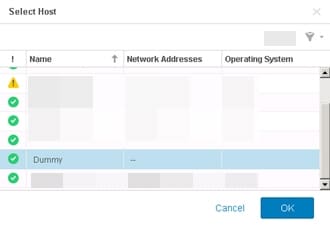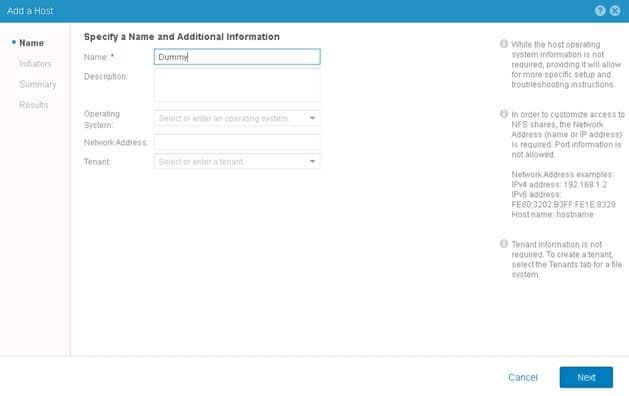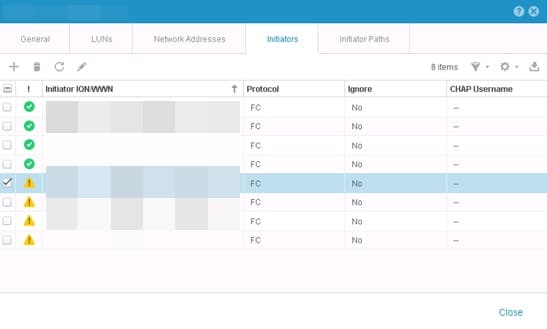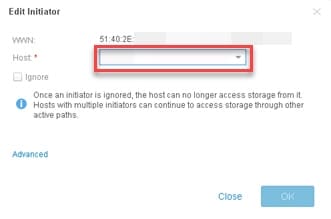EMC Unity Secrets (2019) – How to Remove Unwanted Initiators?
EMC Unity family is successor to EMC VNX family and EMC Unity is more powerful than VNX series. In addition of technology changes, EMC Unity using different UI and different commands. Also there is big differences between some operations on VNX and Unity such as present LUN to host/hosts. If you want to remove initiators from host/hosts, follow the post to find best way to do it.
Remove Unwanted Initiators
Same as VNX, there is two options to register initiators as a host or to the host:
- Automatically via agent
- Manual
We could remove unwanted initiators easily from storage system and also remove initiators from a host on engineering mode in VNX series. But the story is different in EMC Unity.
Remove Auto-Registered Initiators
Unfortunately, if there is any automatic registration, it should be remove by the below instruction:
- Schedule and plan a maintenance (offline) window (unless workaround is applicable for your particular host)
- Stop and quiesce all IO on the host
- From Unisphere, remove ALL LUN access from the host
- If using Fibre Channel, remove zoning for unwanted paths/initiator(s)
- If using iSCSI, remove/log out unwanted paths/initiator(s) from the host side
- From Unisphere, delete the host record (this may be under Hosts or VMware > ESXi Hosts). This will result in any of the unwanted (non-logged in) paths/initiators being removed (deleted) from the Unity system
- Perform necessary steps to initiate the auto-registration again. This may require a reboot of the host. For VMware, you will likely need to run a ‘find’ again. This can be done by selecting the appropriate vCenter in Unisphere and selecting ‘Find ESXi Hosts’ or from the ESXi Hosts page by selecting ‘+’ (Add ESXi Host).
- From Unisphere, validate a correct host record was created and initiators were auto-registered with the host.
- From Unisphere, re-add the appropriate LUN access.
- Continue IO on the host as needed.
I guess, the agent can remove and replace automatically but I never test it on EMC Unity.
Remove Manual Registered Initiators
There is two options that second option is recommended to remove unwanted manual registered initiators from a host.
Option 1
You need to schedule a down time!
- Schedule and plan a maintenance (offline) window (unless workaround is applicable for your particular host)
- Stop and quiesce all IO on the host
- From Unisphere, remove ALL LUN access from the host
- If using Fibre Channel, remove zoning for unwanted paths/initiator(s)
- If using iSCSI, remove/log out unwanted paths/initiator(s) from the host side
- From Unisphere, highlight and delete the initiator from the initiators tab on the host properties page
- From Unisphere, re-add the appropriate LUN access back to the host
- Continue IO on the host as needed.
Option 2 (Recommended)
To remove the unwanted initiators without any disruption, follow the below instruction:
Create a temporary host. It’s too easy click on “+” and create a empty host with out any initiator.

Choose the host which want to remove initiators from that and click on edit icon. Go to “Initiators” tab and select initiator that you want to remove it.
Then click on edit (Pencil icon). At the next window, host should be changed to the temporary host which created in early steps.
After click on combo box, a list of hosts will be show.

Choose the temporary host and click “OK”.
Now, repeat the steps for each initiator and the initiators will be assigned to another host without any service interruption. The you can remove the temporary host and its initiators for storage system.
Don’t remember that remove all zoning for the initiators and any other configurations.
Further Reading
How to Remove Unverified System in VNX Domain














There is no option to change the host for initiator, which i want to remove
I guess, your host is registered automatically.
Read this section of the post: Remove Auto-Registered Initiators
And this link as well:
https://www.dell.com/support/kbdoc/en-hn/493305
Davoud,
Thanks for this! I was pulling my hair out!
Thank you for your comment Steve.